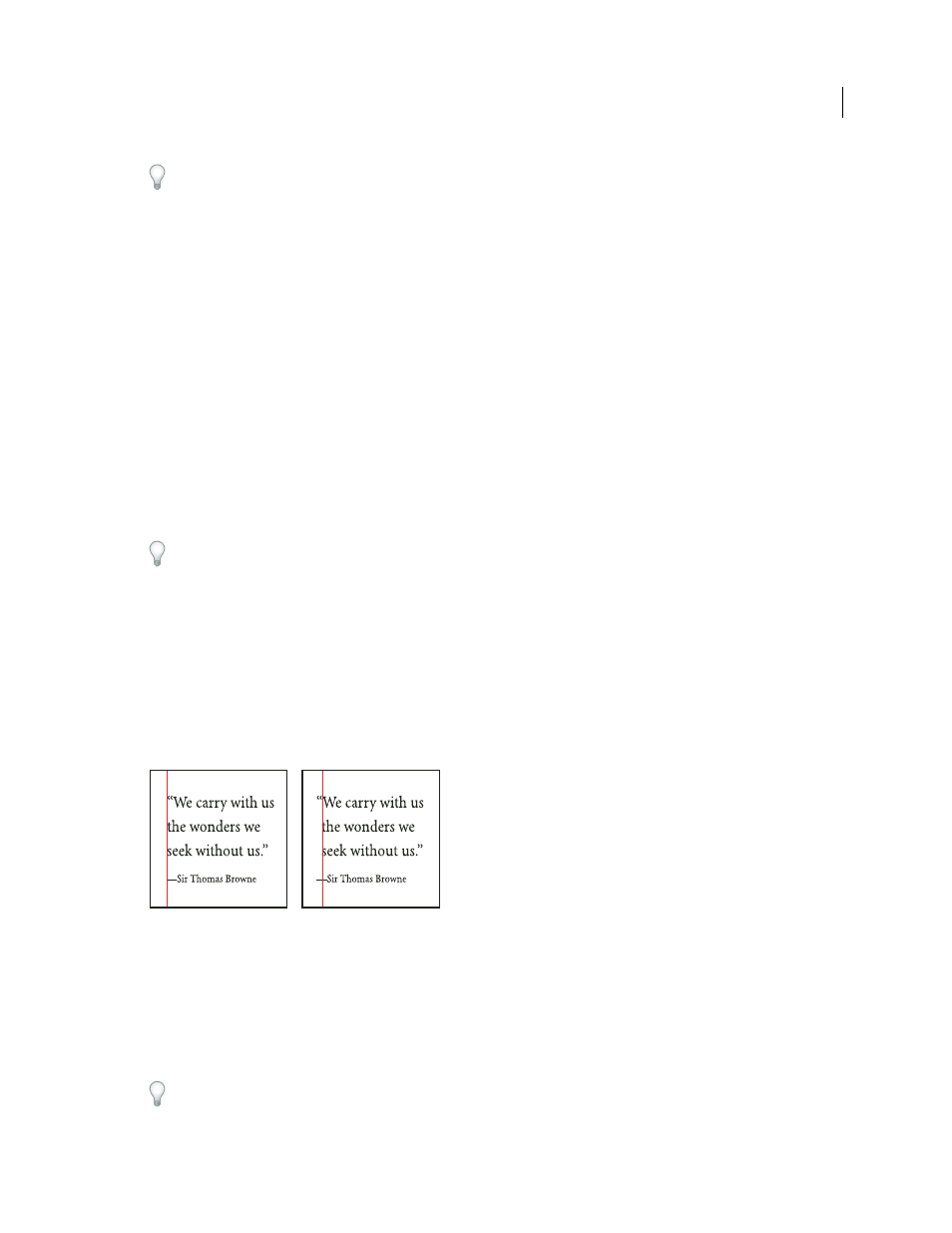Create hanging punctuation – Adobe InDesign CS5 User Manual
Page 270

264
USING INDESIGN
Typography
Last updated 11/16/2011
To highlight paragraphs that violate Keep Options, choose Edit > Preferences > Composition (Windows) or
InDesign
> Preferences > Composition (Mac OS), select Keep Violations, and click OK.
1 Select the paragraph or paragraphs you want to affect.
2 Choose Keep Options in the Paragraph panel menu or Control panel menu. (You can also change keep options
when creating or editing a paragraph style.)
3 Select any of these options and then click OK:
•
Select Keep With Previous to keep the first line of the current paragraph with the last line of the previous paragraph.
•
For Keep With Next _ Lines, specify the number of lines (up to five) of the subsequent paragraph that the last line
of the current paragraph stays with. This option is especially useful for making sure that a heading stays with the
next few lines of the paragraph that follows it.
•
Select the Keep Lines Together option and select All Lines In Paragraph to prevent the paragraph from breaking.
•
Select the Keep Lines Together option, select At Start/End Of Paragraph, and specify the number of lines that must
appear at the beginning or ending of the paragraph to prevent orphans and widows.
•
For Start Paragraph, choose an option to force InDesign to push the paragraph to the next column, frame, or page.
If Anywhere is selected, the start position is determined by the Keep Line Settings option. For other options, they
will be forced to start from these positions.
When you create paragraph styles for headings, use the Keep Options panel to make sure that your headings remain
with the paragraph that follows them.
More Help topics
Add column, frame, and page breaks
Create hanging punctuation
Punctuation marks and letters such as “W” can make the left or right edges of a column appear to be misaligned.
Optical Margin Alignment controls whether punctuation marks (such as periods, commas, quotation marks, and
dashes) and edges of letters (such as W and
A) hang outside the text margins, so that the type looks aligned.
Before (left) and after (right) applying Optical Margin Alignment
1 Select a text frame, or click anywhere in the story.
2 Choose Type > Story.
3 Select Optical Margin Alignment.
4 Select a font size to set the appropriate amount of overhang for the size of type in your story. For optimal results,
use the same size as the text.
To turn off Optical Margin Alignment for an individual paragraph, choose Ignore Optical Margin from the
Paragraph panel menu or Control panel menu.
